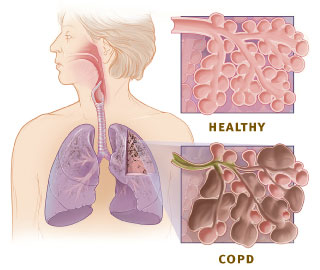A common medication for high-blood-pressure and angina, verapamil, a calcium channel blocker has been seen to protect or reverse diabetes-related death of pancreatic beta cells, those responsible for secretion of insulin; according to a University of Alabama at Birmingham study published March 22 in the journal Diabetes.
Thioredoxin-interacting protein (TXNIP) is a mandatory link between high blood sugar and beta cell death. The carbohydrate response element-binding protein (ChREBP) attaches to DNA in a region that turns on the TXNIP gene in response to high sugar in beta cells.
It has been seen that genetic deletion of TXNIP protects against Type 1 and Type 2 diabetes and excess TXNIP-signaling shuts down the Akt/Bcl-xL pathway that keeps beta cells alive.
The overactive TXNIP signaling seen in diabetes sharply reduces the antioxidant activity of the protein thioredoxin. Higher TXNIP levels in the mitochondria of beta cells increase the chances of thioredoxin not acting on a protein that would otherwise have shut down, apoptosis-signaling kinase 1. Once free, this enzyme initiates a chain reaction that causes beta cell death.
Researchers have now shown that calcium channel-blockers like verapamil can inhibit signaling through the enzyme calcineurine, which increases ChREBP phosphorylation and keeps it from getting into the beta cell nucleus. With less ChREBP, extra TXNIP gene expression is shut down.
Using molecular biology techniques, researchers were able to watch as expression of TXNIP, or thioredoxin-interacting protein, rose in beta cells to abnormal levels as mice became diabetic and then fell again as they received verapamil.
Future treatments conceivably could return TXNIP levels to normal in diabetic patients, but leave in place the basic level of TXNIP-signaling that cells rely on to regulate life processes. The results also suggest the drug is able to slow diabetes in mice with longstanding disease and is more effective when given early.
It remains to be seen if physicians would consider verapamil an additional treatment to protect beta cells in patients with both hypertension and diabetes, similar to the use of ACE inhibitors for kidney protection.
Future clinical studies needed to prove conclusively, if earlier treatment can have effect on diabetes progression by saving more beta cells.
| Overview of the most significant possible symptoms of diabetes. See Wikipedia:Diabetes#Signs_and_symptoms for references. Model: Mikael Häggström. To discuss image, please see Template talk:Häggström diagrams (Photo credit: Wikipedia) |
Thioredoxin-interacting protein (TXNIP) is a mandatory link between high blood sugar and beta cell death. The carbohydrate response element-binding protein (ChREBP) attaches to DNA in a region that turns on the TXNIP gene in response to high sugar in beta cells.
It has been seen that genetic deletion of TXNIP protects against Type 1 and Type 2 diabetes and excess TXNIP-signaling shuts down the Akt/Bcl-xL pathway that keeps beta cells alive.
The overactive TXNIP signaling seen in diabetes sharply reduces the antioxidant activity of the protein thioredoxin. Higher TXNIP levels in the mitochondria of beta cells increase the chances of thioredoxin not acting on a protein that would otherwise have shut down, apoptosis-signaling kinase 1. Once free, this enzyme initiates a chain reaction that causes beta cell death.
Researchers have now shown that calcium channel-blockers like verapamil can inhibit signaling through the enzyme calcineurine, which increases ChREBP phosphorylation and keeps it from getting into the beta cell nucleus. With less ChREBP, extra TXNIP gene expression is shut down.
Using molecular biology techniques, researchers were able to watch as expression of TXNIP, or thioredoxin-interacting protein, rose in beta cells to abnormal levels as mice became diabetic and then fell again as they received verapamil.
Future treatments conceivably could return TXNIP levels to normal in diabetic patients, but leave in place the basic level of TXNIP-signaling that cells rely on to regulate life processes. The results also suggest the drug is able to slow diabetes in mice with longstanding disease and is more effective when given early.
It remains to be seen if physicians would consider verapamil an additional treatment to protect beta cells in patients with both hypertension and diabetes, similar to the use of ACE inhibitors for kidney protection.
Future clinical studies needed to prove conclusively, if earlier treatment can have effect on diabetes progression by saving more beta cells.
...
Click here to Subscribe news feed from "Clinicianonnet; so that you do not miss out anything that can be valuable to you !!
...






